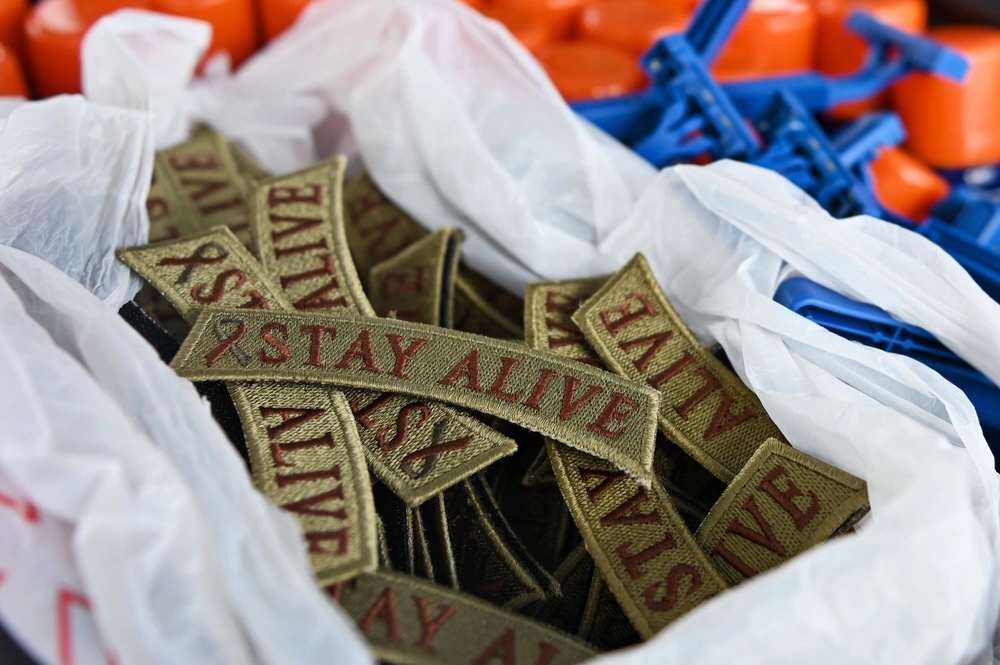A first-of-its-kind comprehensive study meant to help the Department of the Air Force better focus its suicide prevention and response efforts remains a work in progress.
Originally due this past spring, the Standardized Suicide Fatality Analysis report is taking longer than expected because nothing like it has been done before and officials want to get this first annual study right, an official with knowledge of the situation told Air & Space Forces Magazine. No release date is available at this point.
The Air Force is working with the Uniformed Services University of the Health Sciences to combine data from medical, personnel, investigation, and event reports—a compilation of some 1,000 data points for each Active Duty, Guard, Reserve, and Department of the Air Force civilian who died by suicide in 2020, according to Air Force spokesperson Master Sgt. Deana Heitzman. Once the first report is complete, subsequent studies will be released annually, Heitzman said. The next report will cover deaths by suicide that took place in 2021.
Lt. Gen. Caroline Miller, deputy chief of staff for manpower, personnel, and services, first announced the initial report in a statement delivered to the House Armed Services Committee at a personnel posture hearing March 29, saying the report was due that spring.
The Air Force “looks to enhance our practices by systematically analyzing factors, identifying aggregated findings and lessons, and delivering generalizable and actionable recommendations to reduce suicide,” Miller said at the time.

In prior years, the Air Force’s major commands each held their own annual suicide analysis boards, in which leaders and subject matter experts reviewed suicide records and reported findings to the Air Force’s integrated resilience office. This new report centralizes that effort and applies the Department of Defense’s Standardized Suicide Fatality Analysis framework to the entire Department of the Air Force.
“This report represents the first standardized and public health-driven methodology for conducting suicide death reviews across the DAF,” Air Force spokesperson Maj. Tanya Downsworth told Air & Space Forces Magazine in March. “The final reports will include actionable recommendations to inform DAF suicide prevention, intervention, and postvention programming.”
The new report is expected to increase the reliability of the department’s findings, as well the “generalizability of identified lessons learned and recommendations,” she said.
The topic of suicide in the Air Force made headlines in November when a military spouse named Lisa Hermosillo stood on a bridge near Minot Air Force Base, N.D. for three days starting Nov. 16, holding a sign that read “3 Days for 3 Lives Lost” and “Break the stigma.”
The base is investigating the deaths of three of its Airmen in October. Minot could not provide further details on the incidents, but officials said they worked with higher headquarters to make extra chaplains, counselors, and mental health professionals available for grieving Airmen and family members.
The new report would complement existing efforts by the Air Force and the Department of Defense to track deaths by suicide. The Defense Department’s most recent annual Report on Suicide in the Military released Oct. 26 showed 64 deaths by suicide in the Active-Duty Air Force in 2022, for a rate of 19.7 per 100,000 Airmen. That’s compared to 51 total and a rate of 15.3 in 2021. Still, the Air Force had the lowest recorded Active-Duty suicide rate among the services.
In September, Secretary of Defense Lloyd Austin detailed five lines of effort to reduce suicides across the military:
- Foster a supportive environment
- Improve the delivery of mental health care
- Address stigma and other barriers to care
- Revise suicide prevention training
- Promote a culture in which “lethal means safety”
The lines of effort were distilled from the findings of the secretary’s Suicide Prevention and Response Independent Review Committee, which interviewed 2,106 service members and 670 civilians and made 127 near- and long-term recommendations for improvement.
Recommendations include improving child care programs and enhancing military pay and reimbursement processes to minimize unnecessary stress; improve leadership selection and empowering leaders to improve the predictability of individuals’ work schedules; expediting the hiring process for behavioral health professionals to ensure adequate access to care; revising suicide prevention training; and promoting secure firearm storage, including incentivizing service members to acquire their own secure firearm storage. Austin’s goal is to fully implement all of these by the end of fiscal year 2030.
“Suicide prevention is a long-term effort,” Austin wrote in his Sept. 28 memo. “Change will not happen overnight, but we have no time to spare.”
Service members and veterans who are in crisis or having thoughts of suicide, and those who know a service member or veteran in crisis, can call the Veterans/Military Crisis Line for confidential support available 24 hours a day, seven days a week, 365 days a year. Call 988 and press 1; text 988; or chat online at VeteransCrisisLine.net/Chat.
